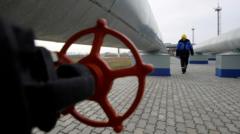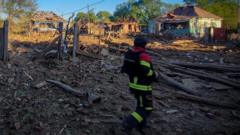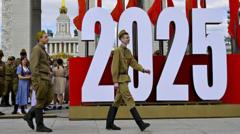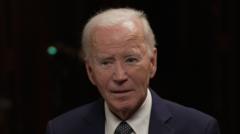As Russian gas flows to the EU cease following a transit deal expiration, both regional stability and alternative energy routes are thrust into the spotlight. Eastern European nations are particularly affected, while broader implications for EU energy policy and Russian economic resilience are considered.
Halt of Russian Gas Transit: A Shift in Europe's Energy Landscape

Halt of Russian Gas Transit: A Shift in Europe's Energy Landscape
The end of Russian gas transit through Ukraine marks a pivotal moment in European energy independence and geopolitical dynamics.
The cessation of Russian gas exports to Europe via Ukraine has triggered significant changes in the region's energy landscape. Following the expiration of a long-standing transit agreement, Ukrainian President Volodymyr Zelensky declared that Ukraine would neither permit Russia to profit from its energy resources nor suffer further from energy exploitation. Meanwhile, Poland heralded the cut-off as a strategic triumph against Moscow.
The European Commission affirmed that although the transition is challenging, most EU states are prepared for the shift. However, Moldova, which is outside the EU, is already grappling with gas shortages, emphasizing the disparate impacts across the region.
From the perspective of Russian energy company Gazprom, the company confirmed the halt of gas exports through the historic pipeline, which has functioned since the collapse of the Soviet Union. While immediate disruptions are minimal for many EU nations, the long-term ramifications on both the EU's energy market and Moscow's economic stability are considerable. European countries have progressively reduced their dependency on Russian gas, minimizing imports from over 40% in 2021 to less than 10% this year, yet several eastern member states still rely heavily on Russian supplies, which bring in substantial revenue for Moscow.
In Slovakia, which has become the primary conduit for Russian gas into the EU, tensions have escalated. Prime Minister Robert Fico acknowledged that government projections indicate rising energy costs for consumers, a scenario attributed to the end of the transit agreement. Fico's recent diplomatic engagement with Putin has raised alarms in Ukraine, with Zelensky accusing him of undermining efforts to counter Russian aggression.
In a proactive response to potential disruptions, Poland has positioned itself as a supporter of Ukraine, offering assistance if Slovakia were to consider halting electricity supplies crucial for Ukraine's energy resilience. Polish officials pointed to alternative energy routes through terminals in Croatia and connections from Germany.
Moldova's situation is particularly precarious, reliant on Russian gas for power generation. The government has accused Moscow of wielding energy as a political weapon, alleging debt disputes as a pretext for cutting supplies. With freezing temperatures imminent, Moldova's government has urgently called upon its citizenry to conserve energy, while also responding to humanitarian needs in the breakaway region of Transnistria.
Meanwhile, amid these upheavals, the European Union has actively sought alternative energy sources such as liquefied natural gas from Qatar and the United States, as well as piped gas from Norway. Plans for a comprehensive transition away from reliance on Russian gas are already in motion, ensuring the EU's energy security remains fortified even as geopolitical tensions endure.
As the region navigates this critical juncture, the strategic maneuvers by various nations will shape the future of European energy independence and stability against the backdrop of conflict in Ukraine and escalating geopolitical rivalries.



















